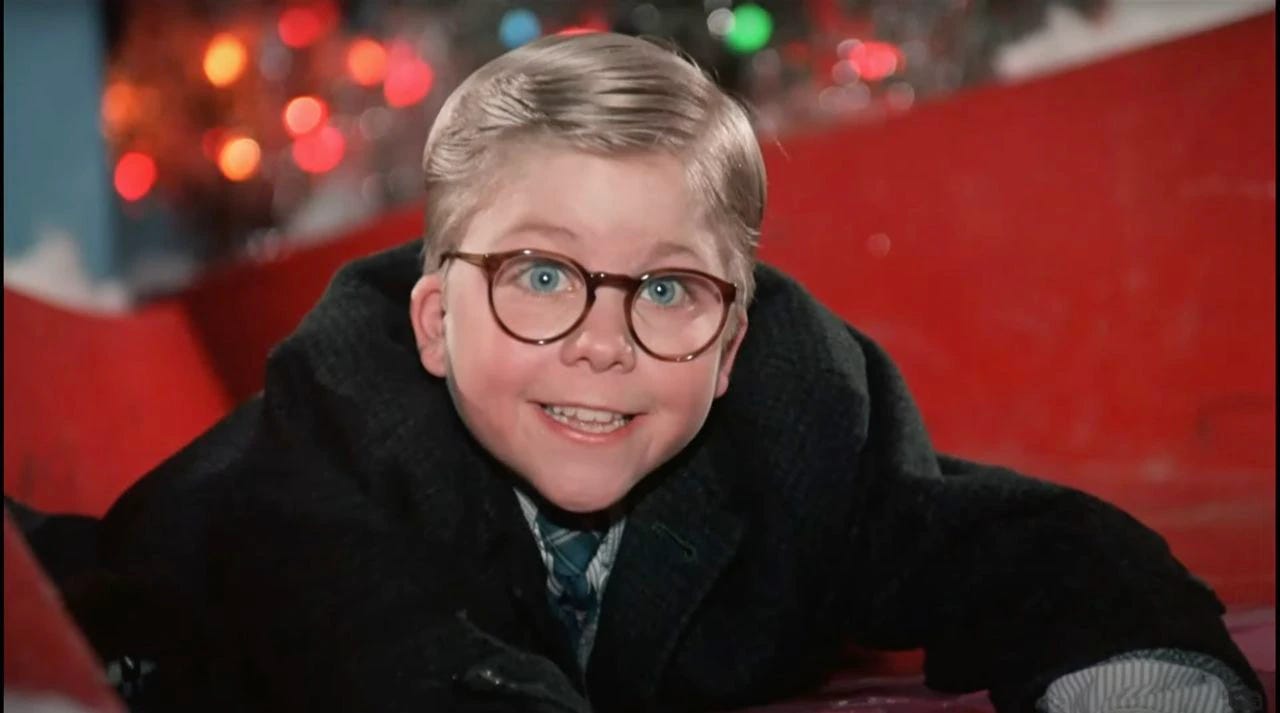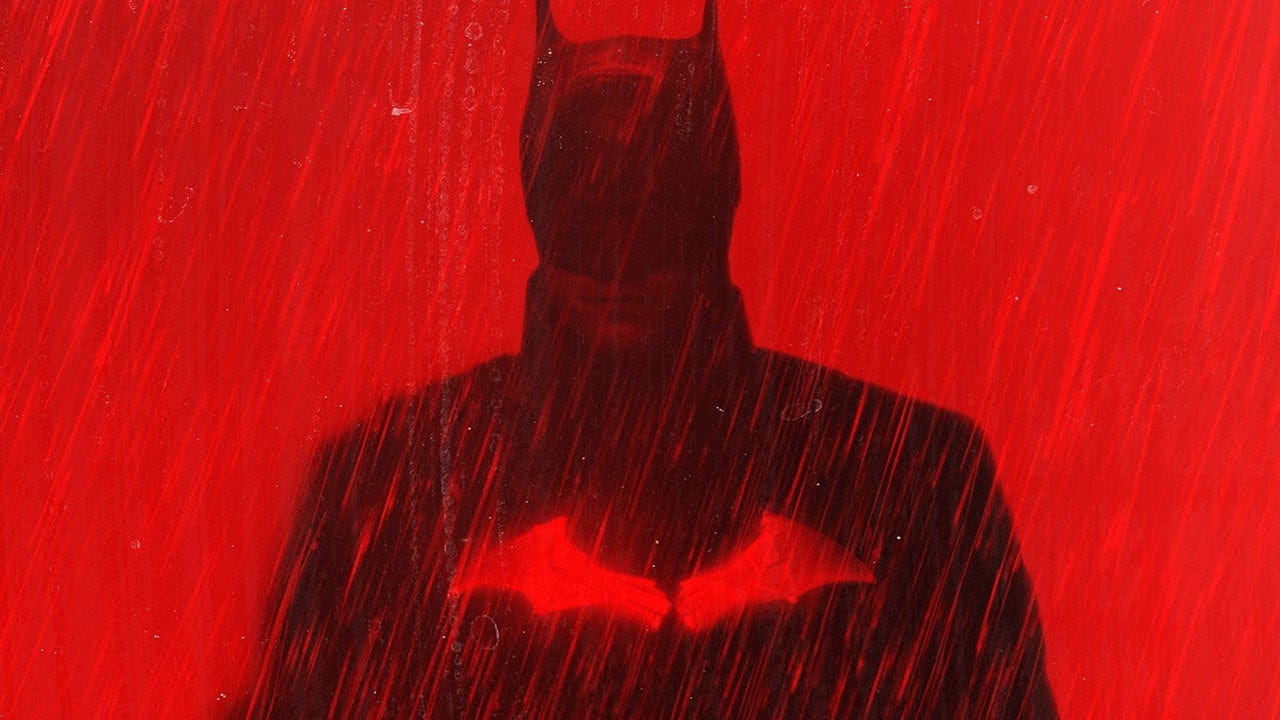Chrisicisms: The rise and fall of AIN’T IT COOL NEWS, more
Plus: ‘Cobra Kai’ season 4, ‘A Christmas Story’ gets a legacysequel, and Batman goes long
So, for the first time since October, I missed a day on this newsletter last week.
My aim is to get entries to you all on Monday, Wednesday and Friday each week, and I also want to get back to the occasional Saturday or Sunday Coffee entries. But last week was a bit of a mess. Part of it is just the hassle of getting ramped back up at the beginning of the year; I try to have most entries ready to go a week in advance, but since I took the time off writing over the holidays, it meant I was starting from scratch. I also had some big freelance projects eating up some free time, a number of obligations to get the kids to in the evenings, and I caught a stomach bug over MLK Day.
I know I probably just need to roll with it and not stress if I miss a date here and there, but I think the former newspaperman in me gets frustrated when I can’t make a deadline, even when it’s self-imposed. My hope is that we’ll be back up and running on a normal schedule this week, and I should even have a new episode of the We’re Watching Here podcast for all of you. So, thanks for hanging in there.
My scheduling usually calls for Mondays to be days when I publish full-spoiler thoughts on whatever major release I took in over the weekend, but for a bit, we’re going to try some different things. The release schedule is still seeing major fluctuations, and there isn’t a big release coming until Jackass Forever on Feb. 4. When that happens, Mondays will be a potpourri of news, reviews of other things I’ve been watching, and more (next week, Jan. 31, I’ll release my top 10 list from 2021).
This week, we’re going to talk about a variety of different topics, but the first and biggest is something that ties into my origins as a film lover and critic.
The rise and fall of AIN’T IT COOL
I cannot stress how big of an impact Ain’t it Cool News had on my life. The film news, rumors and review website run by Austin film geek Harry Knowles and his band of “spies” was launched during my final years of high school. It was one of the first websites I ever visited, and from the first click, I was hooked.
Harry and his writers provided one of the first tangible glimpses of how the internet would change the film world. From his father’s house in Texas, Knowles launched a website that broke the latest film news and rumors, as well as reviews from early test screenings. The site was infamous for announcing casting deals before the ink was dry and running script reviews for movies that hadn’t received an official greenlight. Their test screening reports provided the first inklings that Batman and Robin was going to be a fiasco and that Titanic was going to sweep the world. Its writers had a casual voice, and their remarks about old films, particularly genre movies, helped pad out my syllabus of essential films. Ain’t It Cool News was the first site I visited every morning for nearly a decade, and I dreamt of attending Harry’s Butt-Numb-A-Thon movie festival every December. It was where I first heard of the Alamo Drafthouse, saw the first photos from Lord of the Rings, and it was the site that’s made Austin a bucket list getaway for me.
Tucked away on the internet somewhere is an old Xanga I kept when I was out of college but before I became any sort of professional writer. And in addition to my angsty complaints about the plight of being single, it included my first attempts at movie reviews. When I look back on some of those old entries, I see the influence of the Ain’t it Cool writers on my voice at the time. It’s casual and overly familiar, and there are way too many exclamation points, but it gave me a scaffolding to work from and it helped me locate my perspective as a critic. I wouldn’t be writing about film today had Ain’t it Cool proved you didn’t need an established platform to write about movies, and had its writers not helped me understand the basics.
I eventually outgrew Ain’t it Cool News, even before 2017, when Knowles was hit with allegations of sexual harassment and assault that finally torpedoed the site (which still exists, but barely). I moved on to Roger Ebert and other online reviewers, and venturing into journalism helped me refine my own voice as a critic. But I still follow many of its critics online; Drew McWeeny (“Moriarty”) is still one of the most honest and passionate critics working, and it was his Substack that helped me see the possibilities of newsletters. Eric Vespe (“Quint”) is the co-host of The Kingcast podcast, easily one of the best shows going now and essential listening for Stephen King fans. C. Robert Cargill (“Massawyrm”) is an in-demand novelist and screenwriter, responsible for the scripts for Sinister, Doctor Strange and the upcoming Black Phone. Jeremy Smith (“Mr. Beaks”), Alan Cerny (“Nordling”) and Steven Prokopy (“Capone”) are also still doing great work as critics; if Harry’s consigned to historical oblivion, that’s fine by me.
I bring this up because Joe Scott’s new podcast Downlowd: The Rise and Fall of Harry Knowles and Ain’t It Cool News, is essential listening for anyone who was an avid reader of AICN, those interested in film culture and criticism, or people who want to look back on those wild first days of the internet. Scott’s podcast features interviews with many of the site’s contributors, who chronicle the crazy days when the site was the most feared and courted in Hollywood. The show isn’t a fawning bit of fandom; Scott is open and honest about Knowles’ mistruths, deceptions and the allegations that took him down. But he also understands why the site was such a cultural hit, as well as the impact, for better and worse, that it had on today’s film industry. It’s a wild and insightful look, and just two episodes in, I can’t wait to hear more.
Cobra Kai season 4 is an overstuffed but exciting mess
Is Cobra Kai good or does it just know what I like?
Four seasons in, I’m not really sure. The first season, I’d argue, is genuinely as good as legacysequels get. It builds on The Karate Kid but shifts the perspective just enough to feel fresh and give us a look at that film’s events from the perspective of its bully. It’s a canny, funny and very entertaining season of television that uses the franchise’s characters to great effect while also introducing a new generation of characters. It mingles sincerity and self-awareness well, and it’s still one of the most compulsively watchable binges I’ve ever enjoyed.
Every other season, it seems like the writers decide “again, but more.” More high school drama, more romantic angst, more ‘80s drops and characters from previous movies, and more outrageous karate showdowns. Characters switch loyalties with every act break, and I imagine many people living in the Valley must wonder how they got to the point where karate melees can break out on every street corner. And while it’s often close to toppling over, somehow the show manages to coast by on the strength of winning performances from William Zabka, Martin Kove and Ralph Maccio, as well as an understanding of just how entertaining it needs to be to get audiences to hit that “play next episode” button.
Season four is about as close as the whole enterprise comes to bursting apart. It’s an overpacked 10 episodes of streaming television, following up from last season’s climax, in which Daniel and Johnny find themselves teaming up to take on Kreese and Cobra Kai. The evil sensei calls in rich buddy Terry Silver (Thomas Ian Griffith) from Karate Kid III, who’s even more ruthless and conniving. There’s continued drama between Johnny’s son Robby and surrogate son Miguel, as well as class warfare between Daniel’s daughter Samantha and streetwise Tory. By the end of the season, there are three different dojos competing for different trophies at the All Valley Tournament, which sprawls into the final two episodes of the season.
It’s a bit too much plotting, and I haven’t even mentioned how Daniel’s son Robby is bullying a kid at school who, of course, joins Cobra Kai to bolster his own confidence. The show can’t always hold it together; plot threads and characters are dropped for several episodes before being picked up again, and the show’s will-they-won’t-they (team up) tension between Johnny and Daniel can get repetitive. By this time, it seems the show has gone through every possible configuration of fights, romances and partnerships, and the wheel spinning gets close to tedium about halfway through.
But the thing is, the Cobra Kai folks are really good at this, and just when the energy starts to flag, they find something to capture my interest. I’ll never get tired of the joy Kove has in playing evil, and he and Griffith work really well together (as ever, the show redeems the films’ faults and actually finds a reason for Karate Kid III’s existence). Zabka is delivering really solid emotional and comedic work, and he has some developments as a sensei/father figure that are strong this year. Samantha is a bully I can’t get behind; I’m team Tory all the way, and enjoyed all their showdowns. And the two-part finale so effectively hits the sports movie beats and is such a tremendously entertaining stretch of television that I can forgive it if Robbie is a total drip as a character or the show’s humor is sometimes a bit tonally out of step. The final two episodes are thrilling and addictive, and the show ends on a note that has me looking forward to season five.
Cobra Kai might not be great television, but it’s very watchable television. And sometimes, that’s just what I need.
We don’t need (another) Christmas Story sequel
We go on from talking about one of the best legacysequels to one that I’m convinced we don’t need.
It was announced last week that Peter Billingsley will return in a sequel to A Christmas Story, directed by The Christmas Chronicles director Clay Kaytis and produced by Billingsley and his production partner Vince Vaughn. The story will find Ralphie returning to Cleveland in 1970 to give his family an old-fashioned Christmas celebration and, I assume, shoot his eye out.
A Christmas Story is a bona fide great Christmas movie, one of the few to accurately nail the joy and frustration of childhood. Jean Shepherd’s script is a very funny bit of work, and Shepherd’s narration gives it a warmth that softens its darker undercurrent (the film features more screaming, crying children than any comedy I’ve seen). But it also works because it’s so entrenched in its time; its 1950s Midwestern setting is ground zero for Americana and so many of the traditions and images we associate with the holidays. There’s sly commentary on capitalism and the materialism of the holidays, but it’s also set at a time we associate with Norman Rockwell-style coziness and family innocence.
Maybe I’m wrong, but the 1970s doesn’t have that same draw, and I don’t trust that the director of The Christmas Chronicles — a fine, if forgettable, Netflix movie — and the writer of Grand Torino and The Mule are going to recapture Bob Clark’s Americana touch or Shepherd’s droll touch. Not that it matters; the film is going to HBO Max, so it doesn’t have to be good. It just has to be new content to draw in subscribers (oddly enough, HBO Max’s 8-Bit Christmas, released last year, is a perfectly charming family comedy that captures the warmth and humor of A Christmas Story without pulling out the IP).
And, despite the announcements that make it sound like this is the first Christmas Story sequel, it’s actually the third. In 1994, Bob Clark and Jean Shepherd reunited for My Summer Story (also known as It Runs in the Family), which starred Kieran Culkin as Ralphie and Charles Grodin and Mary Steenburgen that was released to middling reviews and was a box office bomb, bringing in only $71,000 at the box office. In 2012, there was a direct-to-video A Christmas Story 2, starring Daniel Stern as the Old Man and centering on a teenage Ralphie. I have seen neither movie, but they are, by all accounts, not good (A Christmas Story 2 has no critical consensus on Rotten Tomatoes, but sports a wretched 37% audience rating).
But again, in the streaming age, it doesn’t really matter whether the content’s good, so long as there’s content, and all the better if it has a recognizable name and face attached. We’re in the age of the legacysequel, as Scream 5 pointed out, and this is just more of the same. Maybe I’ll be surprised and it will actually be good, but right now it sounds like the cinematic equivalent of shooting your eye out.
The long Dark Knight
This week, it was also reported that The Batman, releasing March 4, will run an epic three hours long.
First off, this isn’t news. Reporting a film’s runtime is not news, the same way stories about the film being rated PG-13 is not really news. Yes, it’s information. Thirteen year olds will be able to see this without parental assistance. You will be in the theater for as long as three episodes of Squid Game. But none of it tells us anything of substance or gives us a hint as to the film’s quality or what to expect, except that you should pee before you go.
But, that’s the nature of film writing these days. Any reason to get a highly anticipated film in your headline and get those sought-after clicks is good enough. There’s a whole other post to be written about the sorry state of film writing these days, which is basically free marketing for the studios, but I’m already running long on this.
Anyway, if this isn’t news, why am I writing about this?
Because I find the reaction interesting. People are chiming in as to whether three hours is a good or bad thing. Bat-fans believe it’s a sign of the movie’s quality. People tired of comic book films are rolling their eyes at another epic-length comic book movie. Box office prognosticators wonder whether it will limit the film’s money-earning potential.
But it doesn’t mean anything. I understand three hours conveys scale and importance. In the past, it was a runtime reserved for films like The Godfather, Apocalypse Now and Titanic. But in an age where Avengers: Endgame managed to make giant bank even at three hours, it’s now just another talking point that conveys how much intellectual property is crammed in, how intricate the plot might be or how “grownup” it is (kids’ bladders can’t take this, man).
But Pearl Harbor also topped three hours, kiddos, so quality isn’t really guaranteed. Nor does cramming Easter Eggs guarantee a smart script and more than an R rating would make it a respectable film or a PG-13 defang it. These are just talking points that the studios throw out there to keep people writing in order to keep people aware of the movie. And movie sites fall for it (and by writing about their reaction, I guess I’m playing the same game). Again, there’s a whole host of sins happening at film sites that I want to tackle in the future, but making non news into news might be among the biggest.
And that’s not to imply I’m not curious about The Batman. I’ll admit I’m exhausted that every new entry in the franchise trying to sell itself as the serious, gritty take on the character. Batman’s a versatile character who’s been done in a variety of tones and styles, and while I don’t think we necessarily need a return to the 1966 camp aesthetic (although I wouldn’t dismiss it outright), there are different, lighter takes to be explored than “dark, grounded and brooding.” But I don’t think Matt Reeves has made a bad movie yet, and I’m curious about Robert Pattinson as a young Bruce Wayne. I’m curious; I’ll just be happy when we can talk about the movie itself, and not the tangential things.









